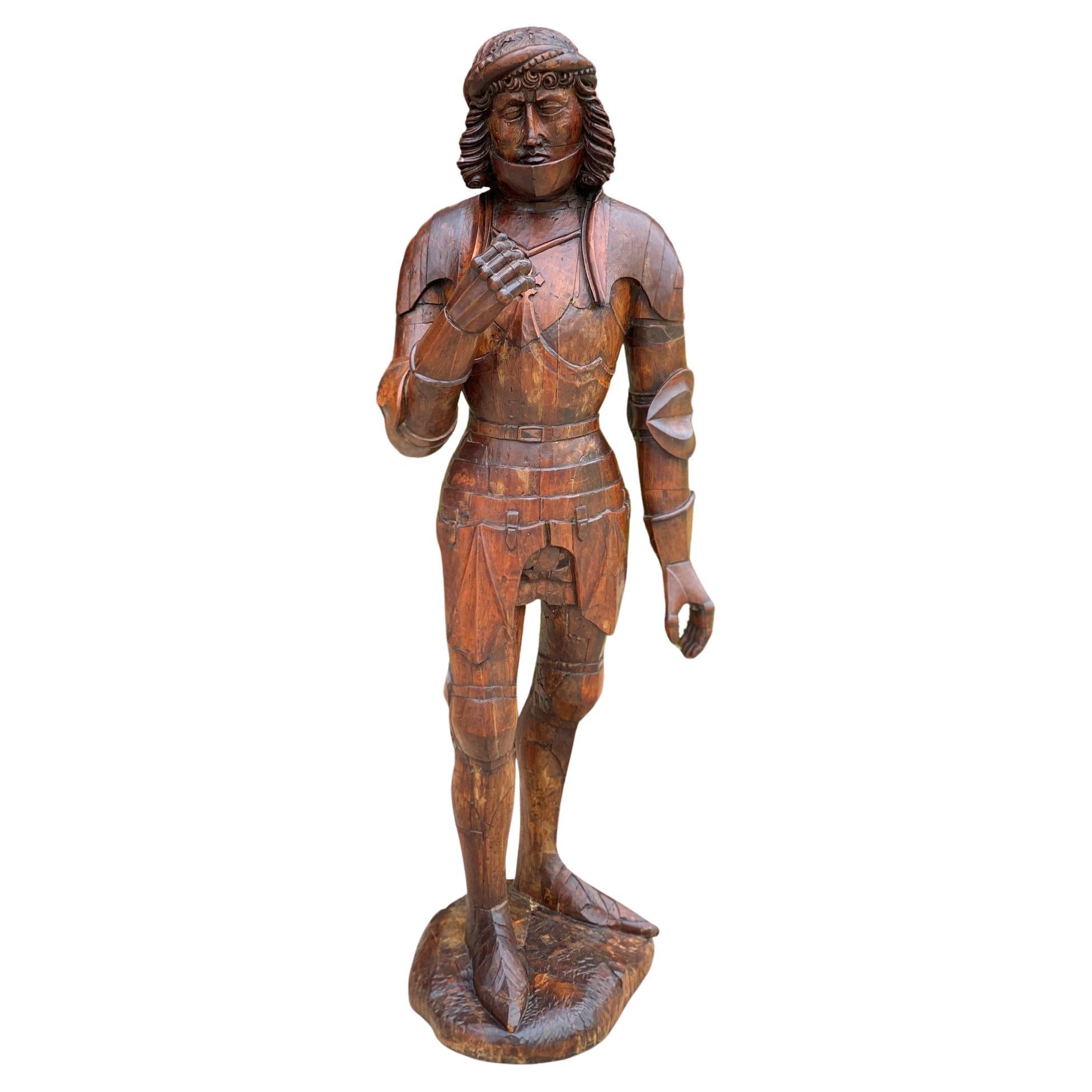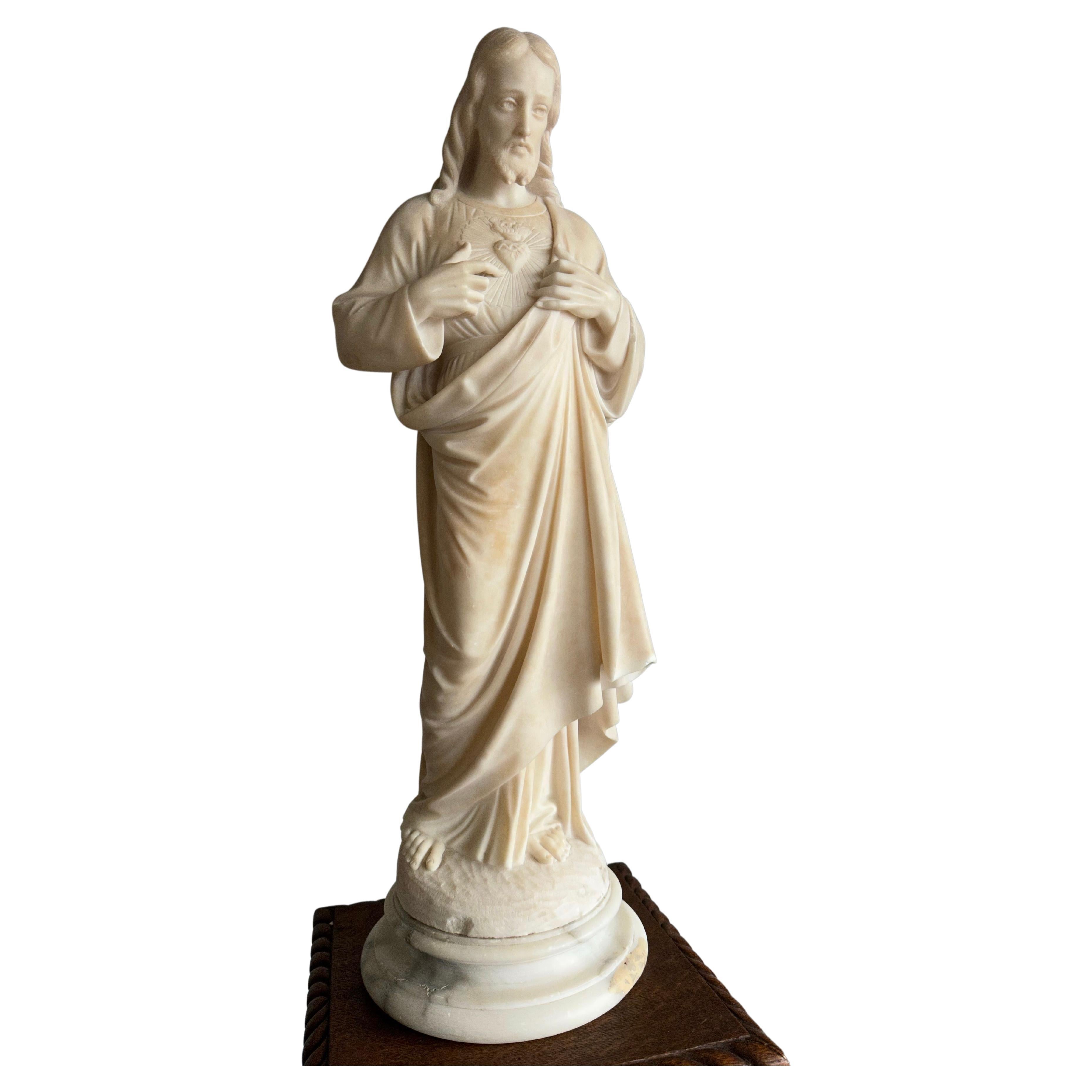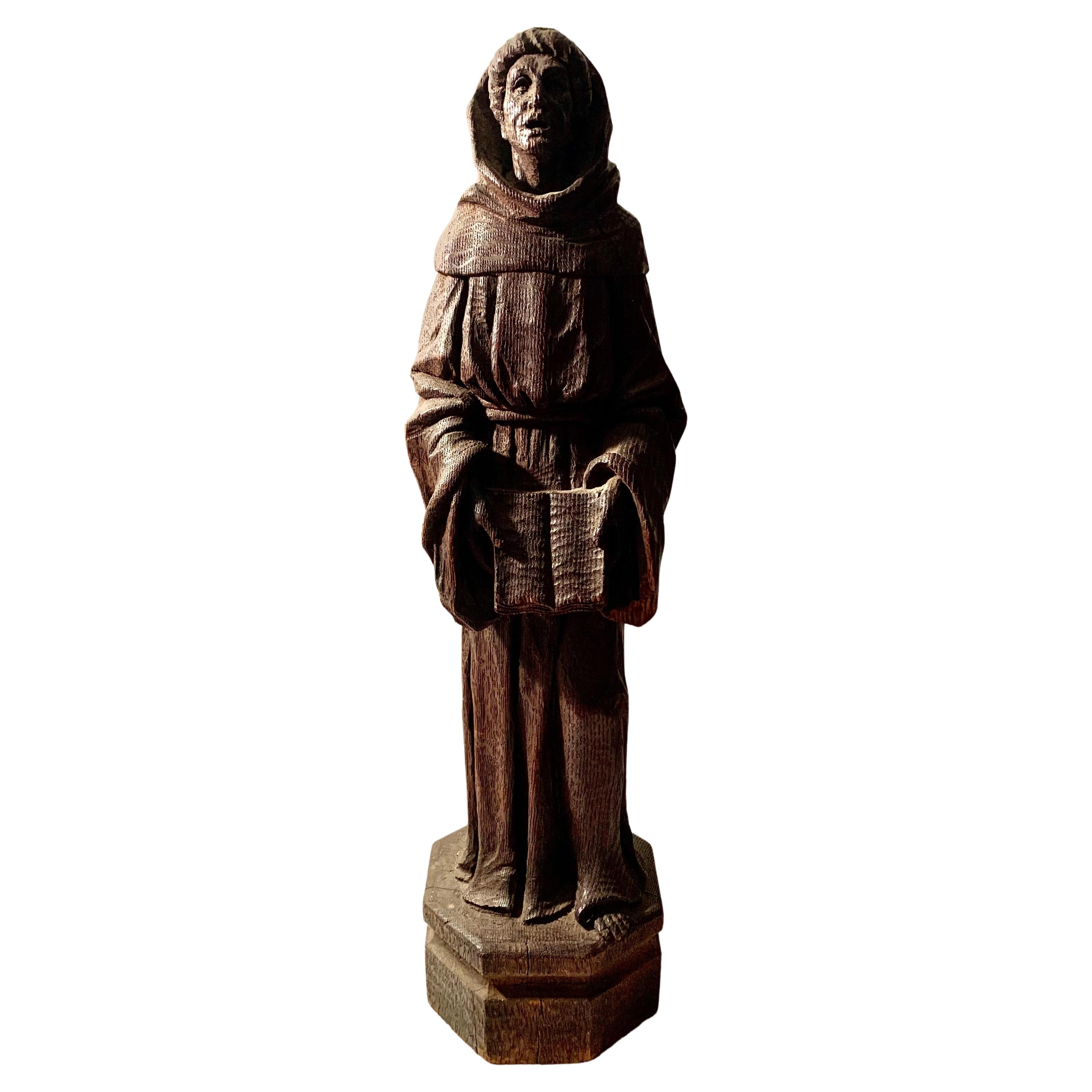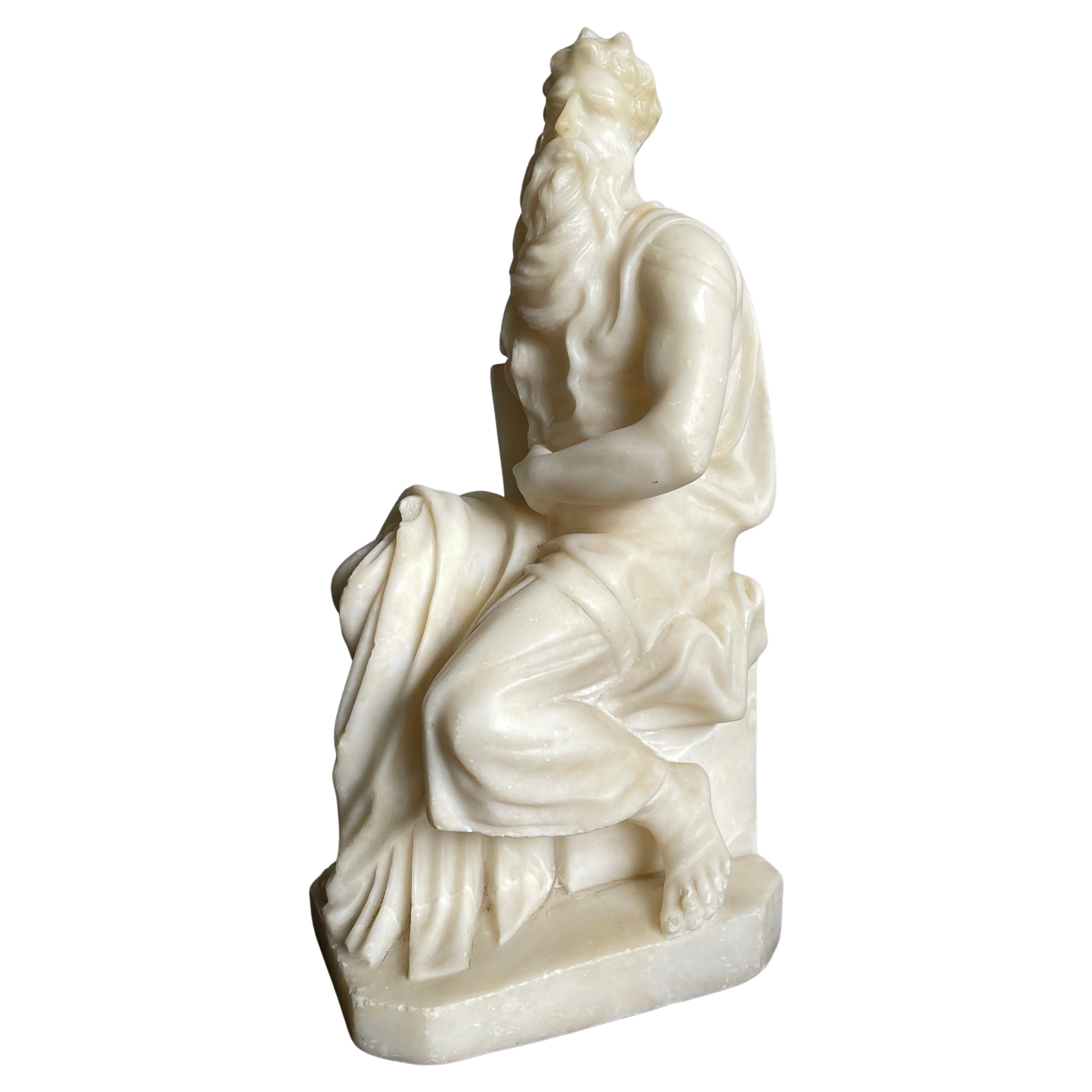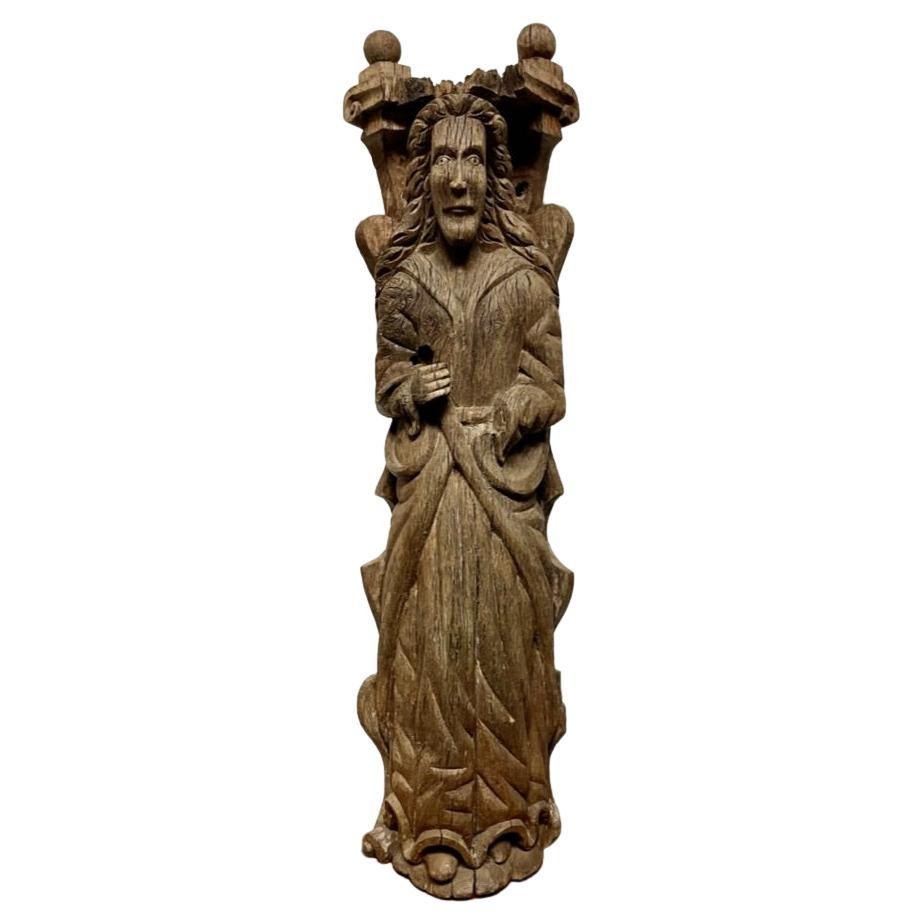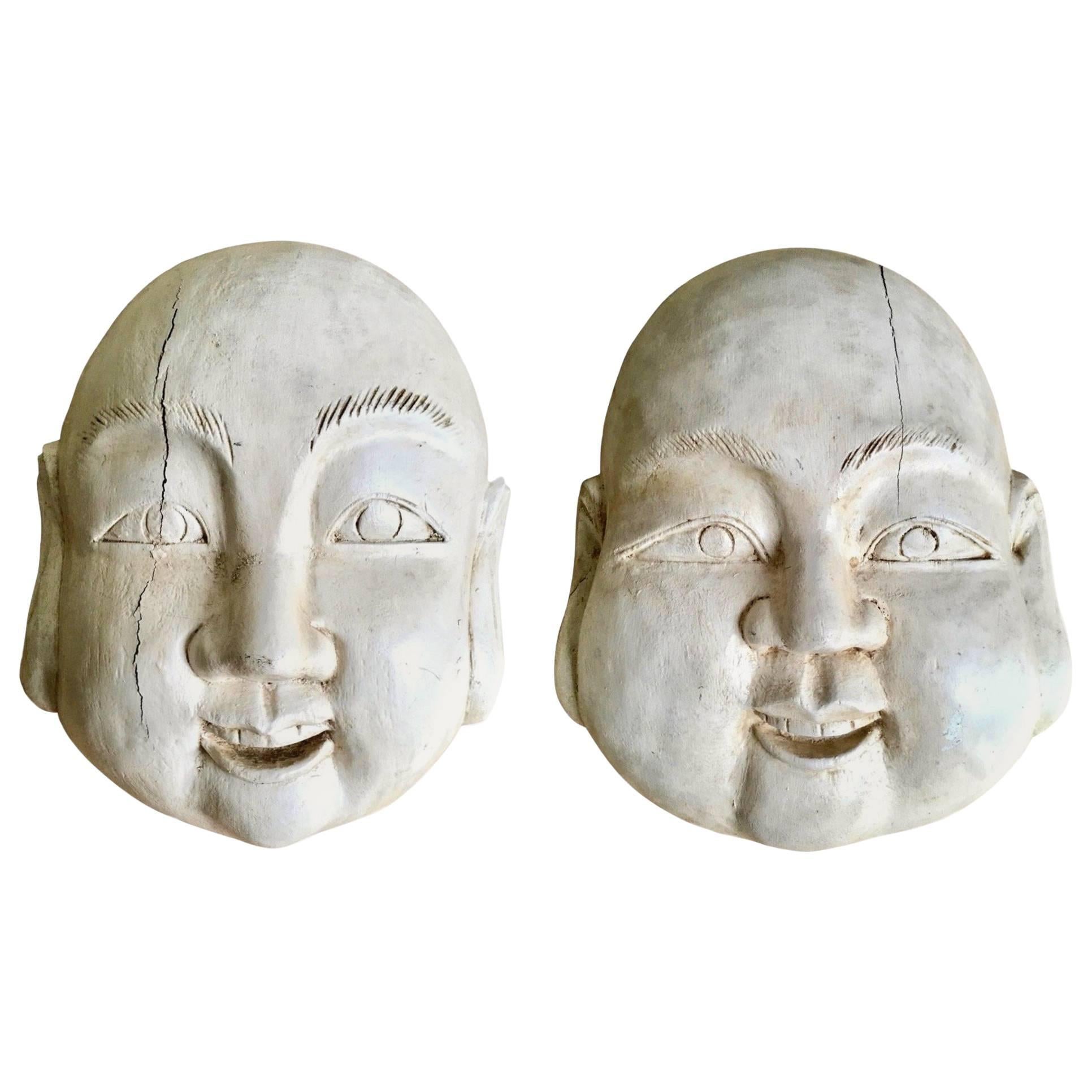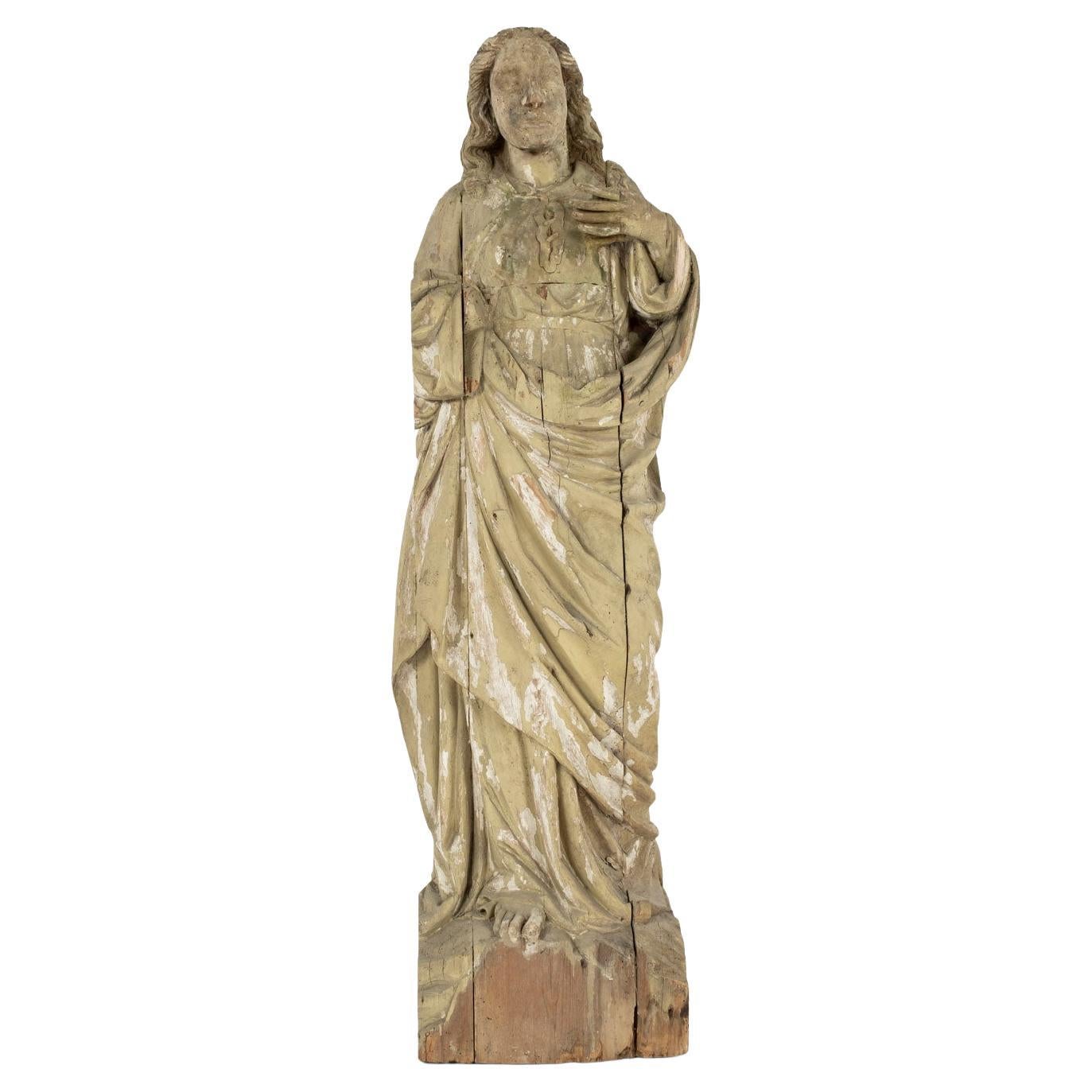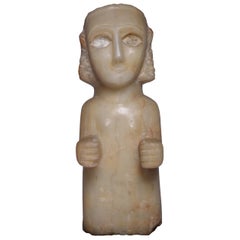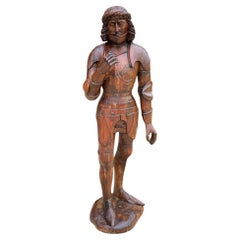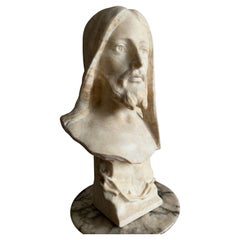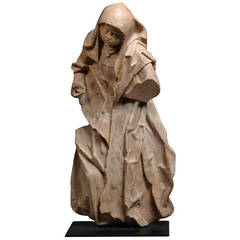
Large Late Medieval Carved Alabaster Figure of a Franciscan Nun
View Similar Items
Want more images or videos?
Request additional images or videos from the seller
1 of 6
Large Late Medieval Carved Alabaster Figure of a Franciscan Nun
About the Item
- Dimensions:Height: 25.75 in (65.41 cm)
- Place of Origin:
- Period:
- Date of Manufacture:1480 – 1520 AD
- Condition:Wear consistent with age and use. Minor fading. Restored across the centre, right hand missing and with wear commensurate with a medieval figure. Mounted to a bespoke bronze stand.
- Seller Location:London, GB
- Reference Number:1stDibs: LU105221263942
About the Seller
5.0
Recognized Seller
These prestigious sellers are industry leaders and represent the highest echelon for item quality and design.
Established in 2008
1stDibs seller since 2014
100 sales on 1stDibs
Typical response time: 8 hours
Associations
LAPADA - The Association of Arts & Antiques DealersInternational Confederation of Art and Antique Dealers' AssociationsThe British Antique Dealers' Association
More From This SellerView All
- Ancient South Arabian Alabaster StatueLocated in London, GBSouth Arabian Calcite female figure 3rd Century BC to 1st century A.D. Calcite Alabaster height: 30.5 cm A magnificent alabaster female figure, a f...Category
Antique 15th Century and Earlier Yemeni Figurative Sculptures
MaterialsAlabaster
- Ancient South Arabian Alabaster InscriptionLocated in London, GBSouth Arabian Alabaster Inscription Calcite Alabaster circa 1st century A.D. ‘’Consequently, neither white marble of Paros nor any other stone which men admire can be compared with the precious stones of Arabia, since their whiteness is most brilliant, their weight the heaviest, and their smoothness leaves no room for other stones to surpass them.’’ - Diodorus Siculus, Library of History, Book II, 52.9 This inscription, finely worked on an alabaster tablet, is a remarkably well preserved example of Ancient South Arabian script, with its distinct bold, angular forms, written in the Qatabanic dialect - that is, the dialect spoken by the people of the kingdom of Qataban, which ruled much of modern day Yemen from the 7th Century B.C. to the 2nd Century A.D. The text, which reads: ‘[... ...]sa?d and Ma?add?i- / (of the lineage) of Hawfa- / She entrusted Anb- / against any malfeasance (which would remove it) from its place’ - indicates that it likely served to commemorate a temple offering. The quality of the script, incised so neatly into the surface of the alabaster, tells us that this piece was commissioned by somebody of considerable wealth and prestige, employing a scribe of equally considerable expertise. South Arabia was known throughout the ancient world for its incredible wealth - so much so that the Romans termed the region ‘Arabia Felix’ - literally, ‘Happy, or Fortunate, Arabia.’ That wealth was built largely on the trade of spices and incense, in which the Kingdom of Qataban played a major part. According to Pliny the Elder, this was the sole country through which frankincense could be exported, first being collected in the city of Shabwa, on the South Arabian coast, and from there travelling by camel up to Gaza, to be shipped all across the Mediterranean - not only that, but all growers of myrrh across Arabia were required to give a quarter of their yield to the king of the Qatabanians. As such, the kingdom became exceedingly rich and powerful, and Pliny goes on to tell us that ‘The nations of the Larendani and the Catabani, and the Gebanitæ [...] occupy a great number of towns, the largest of which are Nagia, and Thomna (the capital of Qataban) with sixty-five temples, a number which fully bespeaks its size.’ Because of the nature of its exports, frankincense in particular - the ‘sweat of of the gods’ according to the Egyptian Book of the Dead, and perhaps most famous as one of the three gifts brought to the newborn Christ - being closely associated with the divine, South Arabia’s reputation in antiquity was as a mysterious, almost sacred, and - crucially - extraordinarily wealthy region, at the very edge of the known world; in the words of Herodotus: ‘’Enough of marvels, and yet the land of Arabia gives off a scent as sweet as if divine.’’ This inscription invokes the protection of god Anbay, the judge-oracle of the chief god ‘Amm, who he served as an attendant. Much of what we know of the religious life of the ancient South Arabians comes to us from early Islamic texts, describing what is known in Islamic scholarship as ‘Jahiliyyah’ - the age before the advent of Islam in Arabia. What comes across in much of these texts is that these religious practices placed a great deal of emphasis on sacred stones, perhaps linked to the brilliance of the alabaster which is local to the region, and which a great many of the cult-objects produced in this time are made from. Hisham ibn-Al-Kalbi’s Book of Idols records: ‘’The Arabs were passionately fond of worshipping idols [...] Whenever a traveller stopped at a place or station in order to rest or spend the night, he would select for himself four stones, pick out the finest among them and adopt it as his god, and use the remaining three as supports for his cooking-pot.’’ This inscription was once in the collection of the intrepid British-Australian travel...Category
Antique 15th Century and Earlier Yemeni Abstract Sculptures
MaterialsAlabaster
- Late Bronze Age SwordLocated in London, GBSaint Nazaire Sword, Late Bronze Age, circa 800-900 B.C. An exceptionally well preserved Bronze Age sword, with elegant, finely incised decorations,...Category
Antique 15th Century and Earlier French Abstract Sculptures
MaterialsBronze
- Large Sculptural MeteoriteLocated in London, GBA magnificent and extremely sculptural specimen of the Seymchan meteorite, recovered in the Russian Far East. This rare and large end cut preserves the patinated and partially melted...Category
Antique 15th Century and Earlier Russian Natural Specimens
MaterialsOther
$205,000 - Large Chondrite Meteorite with RegmaglyptsLocated in London, GBNWA 12759 Stone, Chondrite - L5 18.3 KG “This specimen of the NWA 12759 L5 chondrite has a smooth posterior fusion crust where meteoritic melt pooled as the rock descended through the atmosphere and was heated by friction with molecules of air. The meteorite is from the L-chondrite asteroid that was destroyed by an energetic collision 470 million years ago.” Dr Alan E. Rubin, PhD Department of Earth, Planetary, and Space Sciences, UCLA Detached from its parent body by a mighty impact, this large, oriented meteorite travelled over a hundred million miles through space before falling to Earth in the North African desert. Beautiful regmaglypts radiate from the apex of its cone shaped nose. These elongated dimples formed when streaks of superheated molten rock streamed off the meteor’s surface as it blazed through the atmosphere. The entire piece is coated in a glossy, umber-coloured fusion crust and close examination reveals remnants of encrusted, orange dirt. Whilst most meteors tumble as they travel through the Earth’s atmosphere, oriented meteorites...Category
Antique 15th Century and Earlier Moroccan Natural Specimens
MaterialsStone
- Large Sikhote-Alin Meteorite ShrapnelLocated in London, GBSikhote-Alin Meteorite Shrapnel, Iron, Coarsest Octahedrite “This chunk of twisted metal shows the extreme force of the low altitude air burst which exploded the main mass, causing shockwaves which collapsed chimneys, shattered windows and uprooted trees. Sonic booms were heard more than 300 kilometres away and a 33-kilometre long smoke trail persisted in the sky for several hours.” - Dr Alan E. Rubin, PhD Department of Earth, Planetary, and Space Sciences, UCLA Dating back to the formation of the solar system, some 4.55 billion years ago, Sikhote-Alin meteorites are the best preserved of all known iron meteorites. This extremely aesthetic specimen is a beautiful example of the so-called shrapnel type. It is the result of a powerful secondary explosion which occurred close to the ground, producing a wonderfully scarred and sculptural appearance, with torn and jagged edges and delicate flow lines. On the morning of 12 February 1947, an enormous iron meteor passed through the Earth’s atmosphere, exploding over the Sikhote-Alin mountains in South-eastern Russia...Category
Antique 15th Century and Earlier Russian Natural Specimens
MaterialsIron
You May Also Like
- Antique Knight Saint Carved Statue Figure St. George Soldier Medieval Armor OakLocated in Tyler, TXRare Tall Carved Oak Statue Figure~~Medieval Knight or Saint with Armor~~St. George~~c. late 18th or early 19th century HIGHLY CARVED~~notice the details~~St. George, a Christian saint who was a soldier in the Roman army...Category
Antique Early 19th Century French Classical Roman Figurative Sculptures
MaterialsOak
- Antique & Large, Hand Carved Alabaster Sacred Heart of Christ Sculpture / StatueLocated in Lisse, NLSttunning and meaningful work of religious art. This skillfully hand carved and large size Sacred Heart of Christ statue is another one of our recent gr...Category
Antique Late 19th Century Italian Arts and Crafts Religious Items
MaterialsAlabaster
- Antique, Early 1900 Large Hand Carved Alabaster Sculpture / Bust of Jesus ChristLocated in Lisse, NLUnique and antique alabaster sculpture of our Lord Jesus. This gorgeous and large size work of religious art from a church or monastery is...Category
Early 20th Century Italian Arts and Crafts Religious Items
MaterialsAlabaster
- Antique Large Carved Oak Figure of Saint Anthony of Padua, 18th-19th CenturyLocated in New York, NYFine hand carved oak figure of Saint Anthony of Padua Late 18th- Early 19th Century Saint Anthony is depicted with his head raised, mouth ajar, as if in the process of speaking. He stands upright wearing his traditional Franciscan robes and holding open a book. Beautifully carved with high level of detail, unusual for oak pieces. Oak is a dense hardwood which is difficult to carve and it's rare to see this level of detail in an early oak sculpture. Saint Anthony is the Patron Saint of lost things. While living at the monastery, he had a treasured book which contained psalms and personal observations. His book was stolen by a man who decided to leave the monastery and Anthony ferverently prayed for its return as the cost of a new book would have been beyond his means. The thief repented and returned the book which is believed to be preserved at the Franciscan Library in Bologna. He is one of the most popular Catholic saints...Category
Antique Early 19th Century European Medieval Figurative Sculptures
MaterialsWood, Oak
- Stunning Hand Carved Alabaster Sculpture of Moses Grand Tour Italian AntiqueBy Michelangelo BuonarrotiLocated in Lisse, NLTop quality carved antique Moses sculpture after the original marble Moses by Michelangelo. If you are a collector of rare and top-quality made, biblical antiques...Category
Antique 19th Century Italian Renaissance Revival Religious Items
MaterialsAlabaster
- French Egyptian Revival Carved Wood Figure of King TutankamunLocated in Stamford, CTA carved standing figure of King Tutankamun wearing the royal headdress topped by the double uraeus. This compelling carving depicts the slender boy king standing with arms crossed h...Category
Early 20th Century French Egyptian Revival Figurative Sculptures
MaterialsWood
